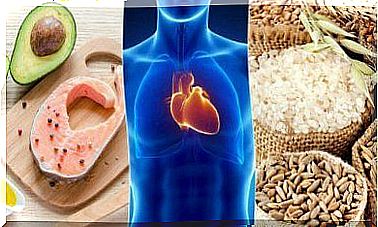Veganism: 7 Tips To Get You Started
Veganism is fashionable and has various advantages. However, since this is a big change, you should take things slowly. Discover seven tips below to help you get started with a vegan diet.

The general characteristic of veganism is the avoidance of animal products. However, adopting a vegan diet involves profound changes in previous habits. Those who decide to adopt this new lifestyle should therefore first find out about it and take any precautionary measures. Find out below what you should consider to make it easier for you to get started with veganism.
Veganism is a global trend that is becoming increasingly popular, be it for the love of animals or because people want a new model of comprehensive health care. Switching to a vegan diet is a decision that, when supplemented with exercise, has great benefits for the body. However, your entry into veganism should be gradual and controlled.
Veganism: 7 tips to get you started
Before you go vegan, it is important that you consider a few relevant aspects. In this way you avoid sudden physical changes and guarantee your well-being. In the following, we give you seven things that you should consider before you go vegan.
1. Set yourself a medium-term goal
Fear of new trends can become a trap, causing some people to go without meat overnight. However, eating and emotional habits are often difficult to overcome. If you abruptly eliminate foods from your diet, you are more likely to be tempted and then feel guilty for not achieving your goal.
Getting started on a vegan diet is easier if you take it step-by-step, with no set deadlines or structured requirements to expedite the process. Adding vegan recipes to your diet once or twice a week will make the transition easier. In addition, this approach facilitates access to a greater variety of foods and creates knowledge about food alternatives.

2. Veganism: Adapted shopping lists
On your shopping list, replace animal foods with grains, seeds, and vegetables. You should make your list consciously and plan accordingly. In addition, you should also think clearly about what you will need for the new recipes and, above all, which recipes best suit your taste.
It’s a good idea to include the following products in your new diet:
- Cashews
- flax
- sesame
- pumpkin
- Vegetable milk
- fermented products (not milk fermented)
You can use these ingredients to make cheese, sauces, and many other alternatives to traditional foods.
3. Analysis and adaptation of your favorite dishes
The process of adapting your meal plan will be slow at first. Therefore, analyze which vegetarian dishes are already included in your diet. Then choose the dishes that you need to customize to make them vegan. Finding alternative vegan meat recipes is extremely easy.
4. Planning of weekly meals
Getting in the habit of making a list of weekly lunches and dinners can come in handy. Being aware of your meals can help you avoid falling into the trap of eating quick meat-based meals.
As you think about each option, think of the most sensible and delicious alternatives to it at the same time . For example, you can substitute soy milk for yogurt or create a new dish that someone recommended to you. The idea is to have a guide that organizes the food the way you want it.

5. Educate yourself about the nutrients in food
The meat, dairy, and other foods you want to replace provide nutrients, vitamins, and minerals. It is important to be informed about the products that can provide your body with these nutrients. For example, milk and its derivatives are a source of calcium that you need to replace with other foods or supplements.
6. With diversity and creativity the entry into veganism works
Get creative with making vegan recipes. The dishes should be varied so that you don’t get bored. Remember, it is neither healthy nor pleasant to eat the same thing over and over again. If you do this, you may give up quickly.
Whenever you adopt a new eating habit, you need to be willing to try new options. This way you can re-educate your palate and expand your taste buds. And you will be amazed at how many vegan recipes there are out there!
7. Use new sources of information
The food labels that can be found on the products in supermarkets contain positive information about various products. In addition, you can also find a lot of information online about veganism, vegan associations and other sites that offer support. It is usually easy to join these groups, make inquiries and gain new recipes and experiences.
A vegan diet is beneficial for overall health. However, we recommend that you have a medical examination before starting.









